Final report for OW16-013
Project Information
Irrigated pasturelands are at the nexus of integrated plant and animal production. Until very recently, these agricultural landscapes have been overlooked in terms of integrated management, production potentials, and environmental benefits. These critical land resources allow livestock producers to meet annual forage demands for their operations, offer flexibility to accommodate annual grazing constraints on public land grazing allotments, and provide short-term alternative forage sources in years with below average precipitation. Irrigated pastures are especially important to sustaining economic viability of livestock operations during drought years when productivity of dryland resources is severely reduced.
- Develop demonstration pasture management studies (demonstration sites).
- Conduct a cross-sectional field survey of ranches to quantify agricultural and environmental outcomes across a gradient of intensity of integrated pasture management strategies.
- Conduct on-ranch workshops at demonstration sites to highlight collaborative research findings, manager expertise and experience, and best management practices.
- Develop an online information hub that allows users to access information and tools on best practices.
Cooperators
- (Researcher)
Research
- Develop demonstration pasture management studies (demonstration sites).
- Evaluate the importance of grazing height (intensity) on irrigated pasture plots at 4 harvest intensities (<1, 2-, 4-, and 6-inch heights; 3 replicates), which reflect the range of regional practices. These demonstration sites (5 on-ranch sites) link to trials examining the influence of fall defoliation height on the productivity of perennial grasses at the UC Intermountain Research & Extension Center (IREC). Agricultural and environmental outcomes from harvest intensity treatments will be assessed.
- Conduct a cross-sectional, observational field survey of working ranches to quantify agricultural and environmental outcomes across a gradient of intensity of integrated pasture management strategies.
- Monitor enrolled pasture sites spanning a gradient of grazing, nutrient, and water management strategies. We selected and enrolled 33 pasture sites for demonstration infrastructure installation across Sacramento Valley-Bay/Delta (1 Placer, 2 Solano, 1 Tehama), Sierra Nevada foothill (4 Placer, 2 Nevada), and Intermountain/Mountain (5 Siskiyou, 5 Modoc, 8 Lassen, 3 Plumas, 2 Sierra) bioregions. This allowed us to appropriately capture variation that exists in pasture management, including grazing, water and nutrient management. Worked directly with producers to assess agricultural productivity, biodiversity, and soil health outcomes across the gradient of strategies.
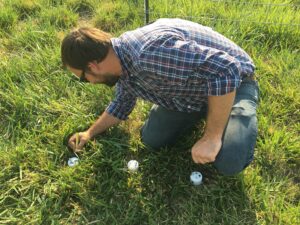
Figure 1. Field crew member installs soil moisture monitoring infrastructure for baseline data collection. Photo Credit: Leslie Roche.
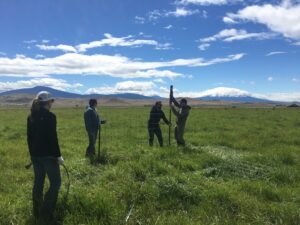
Figure 2. Field crew members work with local UC Cooperative Extension on demonstration site installation. Photo Credit: Leslie Roche.
We measured standing crop, forage productivity, and forage utilization via the paired plot method. Plant diversity and weedy cover were recorded via ocular estimation. At a subset of sites, we also collected soil samples for analysis and monitored soil moisture contents at 6, 12, and 24 inch depths via volumetric water content and resistor blocks.
We have found evidence of micro-climatic effects interacting with grazing/harvest pressure, especially in colder areas with snowfall, with indications that higher defoliation pressure — lower plant height —reduces grass tiller production and impacts subsequent productivity. We are currently completing analysis for the whole suite of agricultural and environmental outcomes monitored to date, as well as continuing project monitoring for additional agricultural and environmental metrics (funded by California Department of Water Resources).
Research Outcomes
Education and Outreach
Participation Summary:
- Conduct on-ranch workshops at demonstration sites to highlight collaborative research findings, manager expertise and experience, and best management practices.
- Four irrigated pasture workshops (June 2017 in Placer County, California; July 2017 in Siskiyou County, California; March 2018 in Solano County, California; in May 2018 in Butte County, California; October 2018 in Placer County, California) showcased current research and ongoing project results, as well as enabled producer-to-producer educational outreach.
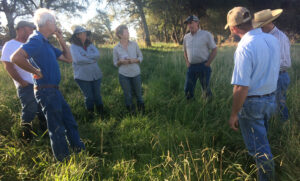
Figure 3. Workshop participants exchange information with peers and discuss irrigated pasture best management practices at an on-ranch workshop (Placer County, California). Photo Credit: Daniel Macon.
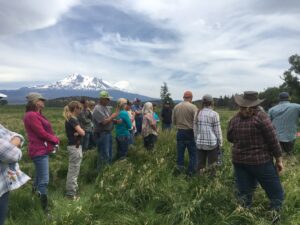
Figure 4. Workshop participants discuss pasture management practices at an on-ranch workshop (Siskiyou County, California). Photo Credit: Leslie Roche.
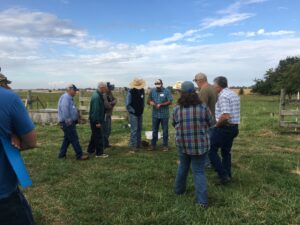
Figure 5. Workshop participants discuss pasture management challenges with UC Davis and UC Cooperative Extension faculty at an on-ranch workshop (Placer County, California). Photo Credit: Leslie Roche.
- Develop an online information hub that allows users to access information and tools on best practices and pastureland enhancement strategies.
- The Irrigated Pasture Management Hub online hub extends the reach of the project, as well as a repository of current research information. We have also created an online decision-support, reporting, and education tool to assist producers in Irrigated Pasture Nitrogen Management and Planning.
This work was featured in the December 2018 issue of Western Farmer-Stockman ("Getting greater pasture productivity"; available at https://www.farmprogress.com/livestock/getting-greater-pasture-productivity) and in the UC Rangelands Fall 2017 Newsletter, which reaches over 2000 subscribers ("Nitrogen App Created by UC Rangelands for Irrigated Pasture Managers"; http://rangelands.ucdavis.edu/uc-rangelands-fall-2017-newsletter). We have also developed educational fact sheets and presentation handouts from the project for field day participants (FieldDay_IREChandout; 20180529_IrrigatedPastureWorkshop), as well as provided supplemental educational materials (Pub-31-1005-Carrying-Capacity-and-Stocking-Rate; Pub-31-1008-Irrigated-Pasture).
Education and Outreach Outcomes
grazing management
nutrient management
irrigated pasture species
water management
invasive plant species